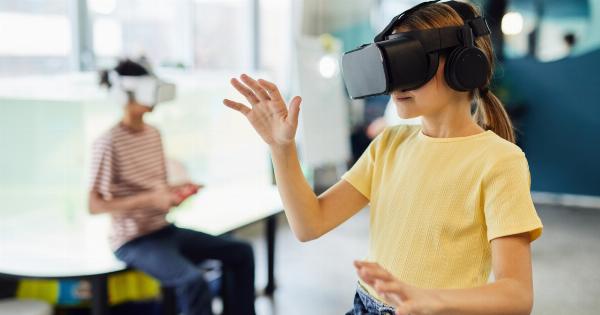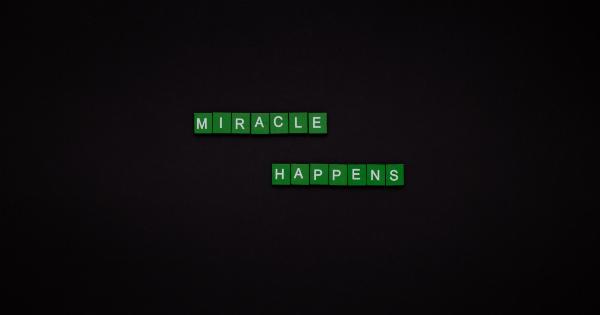Television has become an integral part of our lives, providing hours of entertainment and information.
We humans rely on our senses to perceive the images and sounds on the screen, but have you ever wondered how our canine companions perceive television? Dogs, with their acute senses, may experience television in a unique way. In this article, we will explore the intriguing question of whether dogs perceive television differently than humans.
Visual Perception in Dogs
When it comes to vision, dogs have some unique features that distinguish them from humans. While humans have excellent color vision, dogs have only two types of color receptors, resulting in limited color perception.
Dogs, however, compensate for this by having superior night vision and motion detection abilities.
When dogs watch television, their visual perception may differ from ours. The television screen emits light at a different frequency than natural light, and dogs may perceive flickering or a different level of brightness.
This can make the images on the screen appear less clear to dogs than to humans.
Furthermore, dogs have a higher flicker fusion rate than humans. This means they can detect flickering lights or changes in light intensity at a faster rate than us.
Television screens typically have a refresh rate of 60Hz, which may cause the images to appear as a series of individual frames to dogs, rather than a continuous motion picture like humans perceive.
Research conducted by Dr. Nicholas Dodman, a veterinary behaviorist, suggests that dogs can see television images, but they might not interpret them in the same way we do.
Dogs may have difficulty recognizing objects or scenes depicted on a two-dimensional screen compared to the three-dimensional world they are accustomed to. This difference in perception may impact how dogs react or engage with what they see on television.
Auditory Perception in Dogs
Alongside their visual perception, dogs also have exceptional auditory capabilities. Dogs can hear a broader range of frequencies and have a higher sensitivity to sounds than humans.
For instance, they can detect high-pitched sounds that are inaudible to us. This heightened auditory perception is due to the unique structure of their ears and the presence of more auditory receptors.
When it comes to television, dogs may react differently to the sounds they hear. Some dogs may become attentive when they hear animal sounds, such as barking or meowing, coming from the TV.
Others may respond to certain pitches or volumes of sounds that catch their attention. It is not uncommon for dogs to start barking or growling in response to sounds they perceive through the television.
Research by Dr. Karen Overall, a veterinary behaviorist, suggests that certain audio frequencies used in television programming might be more appealing or stimulating to dogs.
This could explain why some dogs seem more interested in specific shows or types of content on television.
Can Dogs Recognize Themselves on TV?
One interesting question is whether dogs can recognize themselves when they appear on television. Self-recognition is a cognitive ability that some animals possess, and it helps form a sense of self-awareness.
While humans can recognize themselves in mirrors or photographs, dogs rely more on their sense of smell to identify other individuals, including themselves.
Television screens do not emit scents, which may explain why dogs often show little or no reaction when they see themselves on TV.
The absence of scent cues makes it difficult for dogs to connect the image they see on the screen with their own identity.
Despite these challenges, some dogs may show mild interest or perhaps confusion when they see another dog or familiar individual on television.
However, it is essential to recognize that this reaction may not indicate true self-recognition but rather a response to familiar visual stimuli.
Research Findings on Dogs and Television
Scientists and researchers have conducted various studies to delve into the topic of dogs’ perception of television. Some of the notable findings shed light on their behaviors and responses when exposed to TV screens:.
1. Preference for Animal Content
Several studies have shown that dogs display a higher interest in television programs featuring other animals.
They are more likely to pay attention to the screen, react, or even approach it when animal-related content, such as wildlife or other dogs, is being shown. This innate inclination towards animal stimuli aligns with their natural instincts and social behavior.
2. Breed and Individual Variations
Different breeds and individual dogs may have varying levels of interest and engagement with television.
Some dogs may show specific preferences for certain types of content, such as sports or nature documentaries, while others may remain indifferent to television altogether. Factors like breed traits, individual personalities, and past experiences may influence their responses to what they see on the screen.
3. Sound Sensitivity and Emotional Responses
As mentioned earlier, dogs have a heightened sensitivity to sounds. Researchers have observed that certain sounds, like doorbells or sirens, can trigger emotional responses in dogs.
When it comes to television, dogs may experience similar reactions to specific sounds or frequencies. They might even display signs of anxiety or agitation if exposed to intense or alarming sounds on TV.
4. Enhanced Engagement and Social Facilitation
Dogs are social animals, and they often look towards their human companions for cues and interactions. In some cases, dogs may show increased engagement or curiosity towards television when they watch it together with their owners.
This behavior, known as social facilitation, suggests that dogs rely on human reactions to guide their own responses to the stimuli shown on the screen.
5. The Impact of High-Definition Televisions
The advent of high-definition (HD) televisions has brought sharper images and more vibrant colors to our screens. While these technological advancements enhance our viewing experience, they might not have the same effect on dogs.
The increased clarity and vividness of HD screens may accentuate the flickering or provide a more intense visual experience that could further impact how dogs perceive television.
Creating a Dog-Friendly Viewing Experience
If you enjoy watching television with your furry friend, there are a few things you can do to create a more dog-friendly viewing experience:.
1. Choose Animal-Centric Programs
As evidenced by research, dogs have a natural affinity for animal content. When selecting shows or movies to watch, opt for programs that feature animals prominently.
This can capture your dog’s attention and provide them with more sensory stimulation.
2. Use Audio and Visual Enrichment
Consider utilizing audio and visual enrichment specifically designed for dogs. Some television programs and apps are tailored to provide dogs with engaging content.
These often include high-frequency sounds and visual elements that are more appealing to dogs, encouraging their interaction with the TV screen.
3. Monitor Your Dog’s Reactions
While watching television together, pay attention to your dog’s reactions. Observe their body language, behavioral changes, and signs of stress or discomfort.
If your dog displays signs of agitation, anxiety, or becomes excessively fixated on the screen, it may be best to limit their exposure to television.
4. Provide Alternative Entertainment
Television should not replace other important forms of mental and physical stimulation for your dog. Ensure they receive daily exercise, playtime, and social interactions.
Engaging in interactive activities and providing them with puzzle toys can also be more mentally stimulating for dogs than television.
Conclusion
In conclusion, dogs do perceive television differently than humans.
While dogs can see television images, their visual perception, limited color vision, and higher flicker fusion rate may impact their understanding and engagement with what they see on the screen. Dogs’ auditory perception, on the other hand, is highly sensitive, and they may react to specific sounds or frequencies from the television.
It is important to remember that individual dogs may have varying responses to television and that their engagement with it should not replace other forms of mental and physical stimulation.
As our understanding of canine senses and behaviors continues to evolve, further research will provide deeper insights into how dogs perceive television and the impact it has on their overall well-being.
So next time you watch your favorite show with your furry companion, take a moment to consider the unique way they experience the world of television.




























